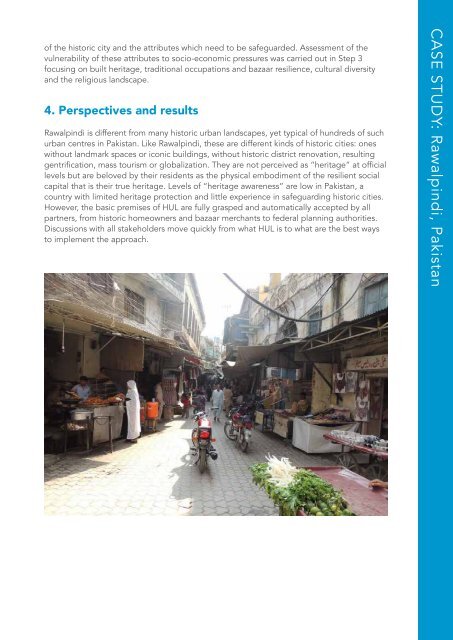GUIDEBOOK
wirey5prpznidqx
wirey5prpznidqx
Create successful ePaper yourself
Turn your PDF publications into a flip-book with our unique Google optimized e-Paper software.
of the historic city and the attributes which need to be safeguarded. Assessment of the<br />
vulnerability of these attributes to socio-economic pressures was carried out in Step 3<br />
focusing on built heritage, traditional occupations and bazaar resilience, cultural diversity<br />
and the religious landscape.<br />
4. Perspectives and results<br />
Rawalpindi is different from many historic urban landscapes, yet typical of hundreds of such<br />
urban centres in Pakistan. Like Rawalpindi, these are different kinds of historic cities: ones<br />
without landmark spaces or iconic buildings, without historic district renovation, resulting<br />
gentrification, mass tourism or globalization. They are not perceived as “heritage” at official<br />
levels but are beloved by their residents as the physical embodiment of the resilient social<br />
capital that is their true heritage. Levels of “heritage awareness” are low in Pakistan, a<br />
country with limited heritage protection and little experience in safeguarding historic cities.<br />
However, the basic premises of HUL are fully grasped and automatically accepted by all<br />
partners, from historic homeowners and bazaar merchants to federal planning authorities.<br />
Discussions with all stakeholders move quickly from what HUL is to what are the best ways<br />
to implement the approach.<br />
CASE STUDY: Rawalpindi, Pakistan


